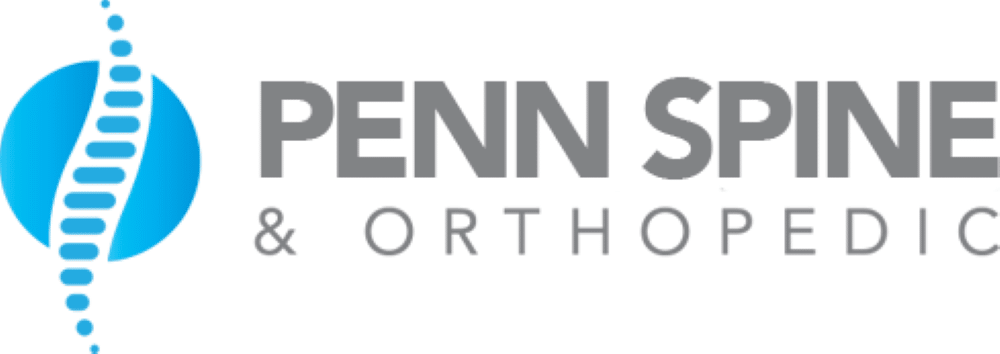The subject of rehabilitation programs for spinal injury patients is a multifaceted one, encompassing both traditional and innovative therapeutic techniques. These programs, vital for physical recovery and emotional well-being, draw on a range of practices, from physiotherapy and occupational therapy to chiropractic care. Emerging advancements, such as robotic rehabilitation and virtual reality therapy, are also contributing to more holistic treatment approaches. It’s worth exploring the balance between these traditional and innovative techniques to understand how they can best support patients in regaining strength, flexibility, and mobility after a spinal injury.
Understanding Spine Injuries
To fully appreciate the effectiveness of rehabilitation programs, one must first explore the intricate nature of spine injuries, which can greatly impact an individual’s quality of life. Understanding the spinal anatomy basics is hence important. The spine, an essential part of the human skeletal system, consists of numerous vertebrae, intervertebral discs, nerves, and supporting tissues. Any damage to these components can lead to debilitating effects, impairing mobility and causing significant pain.
Spine injuries can result from various causes, including accidents, falls, and diseases. Since the spine is responsible for important functions such as movement and sensation, injuries can have significant implications. Prevention is, accordingly, an important aspect. Injury prevention tips include maintaining good posture, regular exercise to strengthen the core muscles supporting the spine, and taking precautions when lifting heavy objects.
However, despite our best efforts, spine injuries can still occur. When they do, they necessitate a thorough understanding of the injury’s nature and the patient’s specific needs. This understanding forms the basis of designing effective rehabilitation programs that can help patients regain their functional abilities and improve their quality of life.
Importance of Rehabilitation
In the journey toward recovery, rehabilitation stands as a significant beacon, instrumental in empowering spine injury patients to regain their functional capabilities and enhance their overall quality of life. The importance of rehabilitation cannot be overstated; it is a cornerstone of spinal recovery. Beyond the physical healing that comes with therapy, rehabilitation offers emotional and psychological support which can be pivotal during this challenging period.
Rehabilitation importance extends to both the physical and mental dimensions of recovery. Physically, it assists patients in regaining strength, flexibility, and coordination, thereby increasing their independence and reducing the risk of re-injury. It also promotes the body’s natural healing processes, encouraging the reconnection of nerve pathways, critical for spinal recovery.
Equally important, rehabilitation provides emotional and psychological support. Spine injuries can often lead to emotional distress, including feelings of fear, frustration, and depression. Through counselling and therapeutic activities, rehabilitation helps patients face these emotional challenges, enhancing resilience and promoting a positive mindset towards recovery.
Inpatient Rehabilitation Programs
Inpatient rehabilitation programs play a crucial role in the recovery process of spine injury patients. This holistic approach often combines various therapeutic methods and the substantial role of physiotherapy. Understanding these aspects can greatly enhance the effectiveness of the rehabilitation journey, bearing the potential to improve the patient’s quality of life.
Therapeutic Approaches in Rehab
Frequently, therapeutic approaches in inpatient rehabilitation programs for spine injury patients encompass an extensive range of interventional strategies, designed to restore physical function and improve quality of life. One such approach is Aquatic Therapy, a low-impact exercise regime that utilizes water’s natural buoyancy and resistance to gently strengthen muscles and improve flexibility. This can be particularly beneficial for spine injury patients, as it reduces the strain on the spinal column and encourages safe, controlled movement. Another key component of these programs is Nutritional Counseling. A balanced, nutrient-rich diet can greatly aid in the recovery process, promoting healing and enhancing overall health. Tailored to the individual’s needs, this holistic method views the patient in their entirety, optimizing their rehabilitation journey.
Role of Physiotherapy
Physiotherapy plays a pivotal role in inpatient rehabilitation programs for spinal injury patients, providing essential treatment strategies aimed at enhancing mobility, alleviating pain, and ultimately improving their quality of life. Posture correction is a significant aspect of this process, assisting patients in maintaining proper alignment and reducing strain on the spine.
The benefits of physiotherapy are manifold:
- Enhances physical functionality and mobility
- Improves muscle strength, reducing the risk of further injury
- Posture correction aids in achieving peak alignment, mitigating spinal stress
- Hydrotherapy benefits include pain relief and muscle relaxation
- Boosts patient confidence, fostering a sense of independence
Outpatient Rehabilitation Programs
Shifting focus to outpatient rehabilitation programs, it is important to contemplate the role of physiotherapy in the recovery journey of spine injury patients. Occupational therapy also offers significant benefits, equipping patients with the skills necessary to navigate daily life post-injury. Additionally, the implementation of home exercise programs can be a valuable tool, promoting ongoing physical development and self-sufficiency.
Physiotherapy and Spine Injuries
A significant proportion of spinal injury patients can experience substantial improvements in mobility and pain reduction through carefully tailored outpatient physiotherapy programs. These programs often focus on spinal mobility exercises and postural corrections, which are critical components of the recovery process.
The key elements of these programs include:
- Individualized Treatment Plans: Designed based on specific patient needs and goals.
- Spinal Mobility Exercises: To increase flexibility and reduce stiffness.
- Postural Corrections: To improve alignment and decrease strain on the spine.
- Pain Management Techniques: Including non-pharmacological methods like heat or cold therapy.
- Education: Empowering patients with knowledge about their condition and self-care strategies.
Benefits of Occupational Therapy
While physiotherapy primarily focuses on improving physical function and reducing pain, occupational therapy in outpatient rehabilitation programs offers multifaceted benefits, aimed at enhancing a patient’s ability to perform daily activities independently and improving their overall quality of life. Occupational therapists work closely with patients to facilitate workplace adaptations, ensuring a conducive and comfortable environment that can accommodate a patient’s physical limitations post spine injury. In addition, they provide essential mental health support, helping patients cope with the emotional and psychological challenges that often accompany their physical ailments. By addressing both the physical and mental aspects of rehabilitation, occupational therapy fosters a holistic recovery process, enabling patients to reclaim their autonomy and lead fulfilling lives despite their injuries.
Implementing Home Exercise Programs
In the continuum of outpatient rehabilitation for spine injury patients, implementing home exercise programs plays a crucial role, offering a practical platform for patients to continue their recovery journey outside the confines of a clinical setting. These programs are typically designed with a patient’s specific needs in mind, making use of exercise equipment available at home, and structured around daily routines to foster consistency and commitment.
Key points of these home exercise programs often include:
* Tailored exercises to enhance strength and flexibility.
* Usage of exercise equipment to aid in recovery.
* Incorporation into home routines to promote consistency.
* Regular progress monitoring and adjustments if needed.
* Providing patient education to guarantee safety and efficacy.
Done correctly, these programs can greatly aid in the recovery process, enhancing overall quality of life for patients.

Physical Therapy Techniques
Using a variety of physical therapy techniques is crucial for effective rehabilitation of spine injury patients. Among these, neuromuscular reeducation and aquatic therapy have proven to be particularly impactful.
Neuromuscular reeducation is a system of techniques used to improve coordination, balance, strength, and proprioception. This method focuses on retraining the nervous system’s control over muscles and movement. For spine injury patients, this can greatly enhance their ability to perform daily tasks with less pain and more efficiency.
On the other hand, aquatic therapy uses water’s unique properties to facilitate healing and exercise performance. The buoyancy reduces weight-bearing stress, allowing a gentle introduction to movements that might be too challenging on land. The resistance offered by water also helps in strengthening muscles, while its warmth can soothe muscle tension and promote relaxation.
These techniques, applied judiciously and tailored to the individual patient’s needs, can notably improve the quality of life for those recovering from a spine injury. Physical therapists play a crucial role in this process, providing expert guidance, empathetic support, and constant encouragement as patients work towards regaining their strength and independence.
Occupational Therapy for Spine Injuries
Beyond the domain of physical therapy, occupational therapy serves as another essential element in the thorough rehabilitation journey of spine injury patients. Occupational therapists work closely with these patients to help them regain their independence and improve their quality of life. This is accomplished by teaching them to use adaptive equipment and providing them with lifestyle modification tips.
A core part of the treatment plan often includes:
- The usage of adaptive equipment like reachers, dressing aids, and buttonhooks.
- Introducing lifestyle modifications such as energy conservation and work simplification techniques.
- Training in mobility skills, using devices like wheelchairs, walkers, or braces.
- Assessment and modification of the home and work environments to promote safety and accessibility.
- Cognitive and perceptual retraining, if needed, to improve memory, problem-solving, and coordination.
These interventions are tailored to the individual’s needs and goals, and are designed to promote maximum function and participation in all aspects of life. By enabling patients to perform their daily activities independently and safely, occupational therapy plays a significant role in restoring their confidence and sense of self-worth after a spine injury.
Role of Chiropractic Care
While occupational therapy focuses on enabling functional independence in daily activities, another crucial aspect of holistic spine injury rehabilitation is chiropractic care. Chiropractic care, often a cornerstone of thorough spine injury programs, emphasizes the mechanical disorders of the musculoskeletal system, particularly the spine.
Through innovative approaches, chiropractic care seeks to restore patients’ mobility and reduce pain levels by manipulating and adjusting the spine. Chiropractic innovations such as flexion-distraction technique, laser therapy, and spinal decompression have shown potential in improving spinal health. These techniques have enhanced the chiropractic field, allowing for more personalized and effective treatment strategies.
However, the field is not without controversy. Chiropractic controversies often revolve around the extent of its efficacy and safety. Critics question the scientific validity of some chiropractic methods, pointing to a lack of extensive clinical trials. However, many patients report significant improvements in pain and function after receiving chiropractic care.
Pain Management Strategies
Pain management is a vital aspect of rehabilitation for patients suffering from spine injuries. It is essential to not only understand the nature of chronic spinal pain but also to explore both non-pharmacological relief methods and appropriate medication. The goal is to provide these patients with effective strategies to manage their pain and improve their quality of life.
Understanding Chronic Spinal Pain
Exploring the intricacies of chronic spinal pain demands a thorough grasp of different pain management strategies. A deep understanding of Spinal Anatomy Basics is essential, as it provides insight into the physiological causes of persistent discomfort. Additionally, a Psychological Impact Assessment is important, as chronic pain can greatly affect a patient’s mental health, altering their perception of pain and their capacity to cope.
The following points further elucidate this complex topic:
– Chronic spinal pain often stems from an injury or degenerative condition.
– Pain can be localized or radiate to other body parts.
– Over time, chronic pain can lead to mental health issues like depression.
– Pain perception varies among individuals.
– Appropriate pain management strategies are essential for improving quality of life.
Non-pharmacological Relief Methods
Moving forward from understanding chronic spinal pain, it’s pertinent to discuss non-pharmacological relief methods, an effective approach that can greatly enhance a patient’s quality of life by managing persistent discomfort. Among these methods, acupuncture benefits stand out, with its potential to stimulate body’s natural healing abilities and to alter pain perception. Additionally, yoga therapy is another significant technique, offering both physical and psychological benefits. Regular practice can improve flexibility, strengthen muscles, and also alleviate stress and anxiety often associated with chronic pain. Both these practices, when incorporated into a holistic rehabilitation program, can provide significant pain relief, minimize dependence on medication, and foster a sense of autonomy and control in patients, thereby promoting overall well-being.
Medication for Spine Pain
While non-pharmacological methods hold significant value, it is important to acknowledge the role of medication in managing spine pain, offering patients an additional, and often necessary, strategy in their thorough treatment plan. Pharmaceuticals provide a direct approach to pain reduction, and when used responsibly and under medical supervision, can enhance a patient’s quality of life.
The following are some common pain management strategies:
- Nonsteroidal anti-inflammatory drugs (NSAIDs)
- Opioids for severe pain
- Muscle relaxants
- Anticonvulsants for nerve pain
- Spinal injections for concentrated relief
However, each of these options carries potential risks and side effects. Hence, it is vital to explore alternative therapies and make sure that the patient’s overall health and well-being remain a priority. A balanced, individualized approach to pain management is essential.

Advances in Spinal Rehabilitation
In the ever-evolving field of spinal rehabilitation, recent advancements have provided unprecedented opportunities for improved patient outcomes and quality of life. Two such advancements are robotic rehabilitation and virtual reality therapy.
Robotic rehabilitation utilizes advanced technology to assist in physical therapy and exercise, improving strength, coordination, and range of motion. These robotic devices can be tailored to each patient’s unique needs, allowing for precision in treatment and progression tracking. They offer a level of consistency and intensity that human therapists may not be able to achieve, thereby increasing the effectiveness of therapy sessions.
Virtual reality therapy, on the other hand, offers an immersive environment where patients can safely practice movements and tasks. This can enhance their confidence and motivation, important factors in the rehabilitation process. Additionally, it can recreate real-life scenarios, which can help patients regain functional skills and adapt to life post-injury.
It is important to note that while these advancements have shown promise, they must be integrated into a patient-centered rehabilitation program. The ideal blend of traditional and advanced therapies can significantly enhance the recovery journey of spine injury patients.
Finding the Right Program
Selecting the appropriate rehabilitation program is a critical decision for spine injury patients, necessitating careful consideration of both their individual needs and the therapeutic offerings available. The key lies in program evaluation and understanding the associated rehabilitation costs.
Several factors must be considered when finding the right program:
– Therapeutic Approach: Programs should offer a range of therapies such as physical, occupational, and cognitive therapy.
– Program Evaluation: Research the program’s success rate, read reviews, and ask for recommendations.
– Cost and Insurance: Understand the rehabilitation costs and check whether your insurance covers these expenses.
– Qualifications of Professionals: Make certain that the program has a team of qualified professionals with experience in spinal injury rehabilitation.
– Location and Facility: The program should be easily accessible and the facility should be equipped to handle spinal injury patients.
Lastly, the decision should not be rushed. Taking time to evaluate and compare programs will guarantee that the patient’s individual needs are met. After all, good rehabilitation is the cornerstone of recovery for spine injury patients, playing a pivotal role in their ability to regain independence and improve quality of life.
Real-Life Success Stories
Turning our attention to real-life success stories, we find a multitude of inspiring examples showcasing the transformative impact of proper rehabilitation on the lives of spine injury patients. These narratives illuminate not only the physical recovery but also the psychological resilience developed through injury coping strategies.
One such story revolves around a young woman named Sarah who, after a debilitating spinal cord injury, was able to regain her mobility and independence through an intensive rehabilitation program. Sarah’s journey underscores the importance of tailored therapies, which addressed both her physical and emotional needs. She credits her recovery to a blend of physical therapy, occupational therapy, and counselling.
Equally essential to Sarah’s recovery was the role of support groups. Here, Sarah found a community of individuals experiencing similar challenges, fostering a sense of camaraderie and shared understanding. The importance of these support groups cannot be overstated. They provided Sarah with a platform to share her experiences, learn from others’ coping strategies, and ultimately, derive motivation to persevere.
Sarah’s story, among many others, reaffirms the transformative potential of thorough rehabilitation programs. They not only restore physical function but also rebuild the emotional resilience needed for a holistic recovery.
Frequently Asked Questions
What Diet Modifications Can Assist in Spine Injury Recovery?
Dietary modifications, including supplemental nutrition, can aid in spine injury recovery by promoting tissue repair and reducing inflammation. Hydration importance must also be emphasized, as proper fluid intake supports overall health and healing processes.
How Does Mental Health Affect the Rehabilitation Process?
Mental health greatly impacts the rehabilitation process. Emotional resilience plays a vital role in recovery, while therapeutic techniques can manage psychological distress, improving the patient’s ability to cope with physical limitations and adhere to rehabilitation regimens.
Are There Any Supportive Technologies for Spine Injury Patients?
Yes, supportive technologies such as Assistive Robotics and Virtual Reality Therapy are increasingly being utilized to enhance the rehabilitation process for patients who have suffered a spinal injury. These technologies offer adaptive and immersive therapeutic options.
How Can Family Members Help in the Patients Recovery Process?
Family members can play a crucial role in a patient’s recovery through active participation in Family Training Programs. These programs educate families on caregiving tasks, helping to prevent caregiver burnout and promoting a supportive home environment for healing.
Does Health Insurance Typically Cover Spine Injury Rehabilitation Programs?
Health insurance policies often provide coverage for spine injury rehabilitation, although there may be insurance limitations. It’s important to review one’s policy to understand the extent of coverage for rehabilitation costs.

